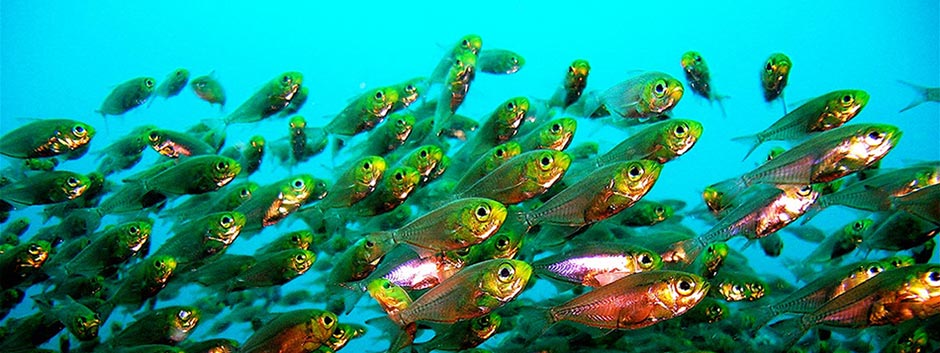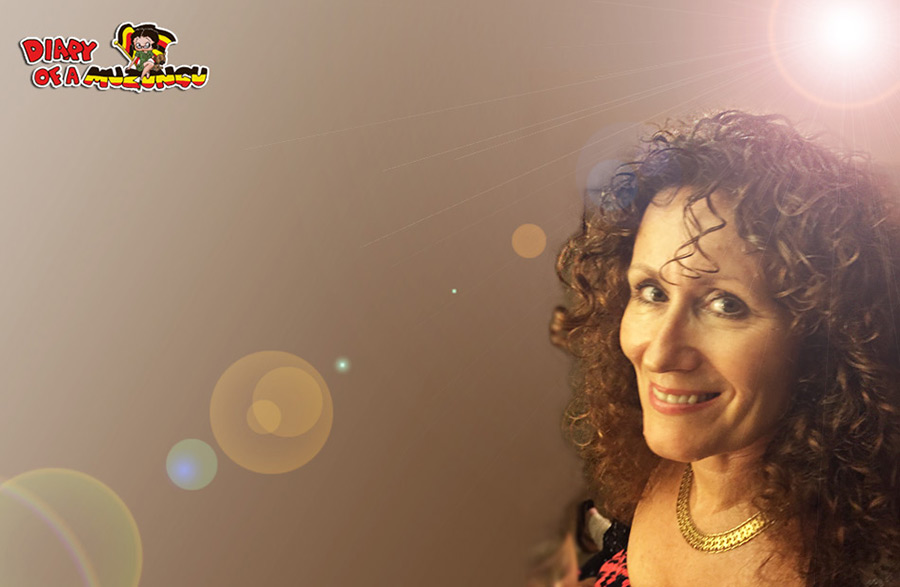
The Indian Ocean beckons…
Seventh Heaven isn’t up in the sky, it’s here in the warm Indian Ocean waters of Watamu, Kenya, an hour and a half drive’s north of Mombasa. This is the Muzungu’s guide on where to snorkel in Watamu. If you think Kenya’s wildlife is just about the Big Five, then think again. Even now, conservationists are still exploring and discovering new species in Kenya’s ocean, of dolphins and whales, and the tiniest prettiest little creatures: nudibranchs. Read on, Kenya’s marine life will amaze you…
What a treat! Today I’m being taken on a snorkeling safari by a zoologist and a marine biologist.
At Hemingway’s Watamu I’m taken aback when a handsome (virtually) naked man jumps out of his car to greet me and Steve from the Watamu Marine Association. What a welcome! (I try not to stare). Our zoologist and professional snorkeling guide Richard is simply dressed in swimming shorts, ready for the beach. Life in Kampala has made me a total townie.
The weather is intensely hot. We have arrived during a heatwave, sweating all the way from Nairobi to Mombasa on the legendary Lunatic Express train.
The swim out to the main snorkeling area of The Larder is not quick! I am following two seasoned marine experts, read ‘strong swimmers,’ who are effortlessly doing front crawl for 100 metres. I am honoured but humbled too. (Will I keep up with them? I ask myself as they plough ahead of me).
The Larder gets its name from ‘the old days’ when the plentiful fish attracted spear fishing for food. Spear fishing is no longer allowed. Watamu Marine Park and Reserve is a nationally protected area; now the only things we take are memories and photos.
The three of us are never more than 20 metres apart. I’m incredibly lucky to have these two experts guide me around the reef and point out the new fish. (It is also quite fun to spot new fish on my own!)
I find myself in an open sandy area of the ocean, fringed by long dark seagrass. There is little else to see until … a sudden, large movement along the sandy edge of the sea grass: A SHARK! It’s a small one, around a metre long. No sooner have I spotted it, than it wiggles off into the distance. Richard and Steve later confirm that I have seen a Black-tipped Reef Shark.

According to the Coral Reef Fishes book, the Black-tipped Reef Shark “lives on reef flats and margins. They can measure up to 180 cm long. It is easily frightened but known to mistakenly bite waders’ feet.” Oo er….
Above the water, Richard shouts “Let’s look here. Sometimes we see turtles here.”
When Steve and Jane first arrived in Watamu, they worked for Watamu Turtle Watch. I haven’t seen any turtles yet on this trip. No worries there, I know I will revisit Watamu!
We see a number of rays, disc-shaped flat fish, half submerged in the sand. As we approach, their panic throws up a flurry of sand and they speed off into the distance. When we see them from the surface of the water, they appear pale brown. When I dive down for a closer look, I see why they are called Blue-spotted Ribbontail Ray.


Steve points to a Batfish, an elegant tall fish, shaped like a human hand. Something about its demeanour makes it look very serious.
We see Porcupine fish, Whitespotted puffer and Trevallys. You don’t need to know the names of every fish you see though. Just watching these gorgeous creatures, and enjoying the play of colour, movement and light is fascinating. It’s a kind of meditation.
It’s the tiny wrasses and nudibranchs that are the most colourful. The splendid vibrant little wrasse fish weave between the larger fish, and in and out of small crevices and rocks. The sunlit water comes to life with their colour and movement. Many of these fish appear familiar to me. They are the kind that were once popular in British doctors’ waiting rooms! (Imagine the glum life that awaits the poor fish that is plucked out of the tropical ocean and exported to a sanitized life in an aquarium. Many don’t even last the journey from sea to aquariam).
The stunningly beautiful – and tiny – Nudibranch are in a world part! Photos thanks to Turtle Bay Dive Centre, Watamu.
We pause at the surface of the water for a moment and Richard removes his breathing tube to explain that The Larder is known as a cleaning station. “Fish come from miles around to this particular section of the reef. Here the Cleaner Wrasse remove (and eat) the parasites from larger fish.”
The three of us pause at the overhang of some coral rock. Richard dives down and points. I realise he must be pointing at something new but I can’t see it. He tells me he can just spot the fish’s dorsal fin sticking out of the seaweed. (All I can see is something that looks a bit like a dog-eaten credit card!) It is a pale olive green with vibrant white edging, sitting perfectly still.

I dive down for a closer look. It takes me several attempts before I realise that the ‘dog-eaten credit card’ is actually ‘the spot of the day’! Richard seems quite excited when we talk about it later. It turns out that it is a Leaf Scorpionfish (Triacanthus taeniatus).


Watamu Marine Park and Reserve once had a dazzling array of colourful corals. The fish are evidence of that. You can still see a wide variety of coral shapes and structures but, for the most part, their colour has faded. I glimpse small patches of pink, orange and yellow. It was the El Niño of 1997-98 that devastated the majority of the corals here. In places you can even see the scorch marks of bleaching made by the abnormally high ocean surface temperatures.
Will the coral ever recover?
For the last three years, conservation organisations A Rocha Kenya and Kenya Wildlife Service have been carrying out research into the health of the coral. They have seen good recovery of the coral in a number of areas in Watamu Marine National Park. However, the coral will take decades to recover to its former splendour. There is hope for the future but climate change is always a looming threat.
Back on our snorkeling safari… we swim back to land after what is (unbelievably) one and a half hours snorkeling. I’ve been so caught up in the whole experience, I’ve completely lost the concept of time. Only my shriveled ‘prune-like’ fingertips are the tell-tale sign of my being in the sea for a long time.
In the shallows, approaching the beach, I see a long thin stretch of colour in a small sandy crevice. Is it a fish or is it a bit of plastic? As I watch, it turns in a circle, dives in the hole and pokes its head out of the front. It waves its tiny teeth menacingly at me in a characteristic Moray Eel fashion. It has a pale body, with pale brown / pink freckles on it and tiny yellow freckles on its face. Is it a Ribbon Eel? Was it a Sharptail Eel?

Watamu’s beach is a wonder in itself. It is whiter than white. The sand is softer than talcum powder. During the day it is burning hot under your feet too!

Keeping the beach clean requires teamwork. The Watamu Marine Association has devised a comprehensive beach clean-up and recycling programme which is a win-win for the whole community.
Local people are employed to keep the beach clean. The plastic rubbish is recycled at the award-winning recycling centre. From there, some fabulously innovative recycled plastic products are made for tourists to buy in local lodges and hotels. (Needless to say, anyone who visits the beach is asked to take their rubbish home with them as well!)
Top tips for snorkelling and scuba diving in Watamu
The best time of day for snorkeling: figure out the tides first. The best time to snorkel is when the tide is halfway out.
When the tide is out, there may not be enough water to snorkel. When the tide is in, you will be too far above the reef to see the fish beneath them. As the tide comes in, the water can be cloudy as it’s full of sand.
Think about how far you have to walk or swim before you reach the most interesting part of the reef. Do you have to get a boat there?
The fee to snorkel or scuba dive in Watamu Marine Park and Reserve is 150 KES (Kenyans); 350 KES (all other East Africans citizens); $20/15 (non-residents / tourists adult and child). This fee is payable daily to the Kenya Wildlife Service.
Buy or borrow a copy of Myers and Lieske’s “Coral Reef Fishes Princeton Pocket Guide.” I need to relearn the body parts of a fish (it will make it easier to explain to your guide what you have seen and what you are asking for help in identifying).
- Don’t forget to apply high factor sunscreen. It’s a good idea to wear a T-shirt and even a scarf to protect the back of your neck (or your bald head, Steve!) You can easily lose track of time and not feel the hot sun – until you’re writhing in pain from sunburn a few hours later!
- Do not touch the coral, ever. Simply touching it can damage it. Coral takes many years to grow. If you’re a snorkeling novice, don’t wear fins.
- Go snorkeling and scuba diving with a knowledgeable local guide.
- I didn’t see dolphins but I did on a previous trip with the Watamu Marine Association!

Special thanks to Esther Steiger for the beautiful fish photos.
- Good practice guidelines for snorkeling, courtesy of Watamu Marine Association
- Your safety and protection of the marine environment should be your number one consideration. Keep your head in the water and feet at the surface at all times when you are in the coral areas.
- Fins can be very destructive to the coral. Snorkel without fins unless the water is deep and you are covering a large distance.
- Don’t step on the coral. This will kill it. Stepping on coral can also lead to nasty cuts. Bacteria and algae living in the coral can easily enter wounds.
- Do not touch, damage or remove coral. It is a fragile living organism, which takes many years to form. The coral is also host to many rare and endangered vertebrate and invertebrate species.
- Never touch, chase or harass the wildlife or marine life.
- It is illegal to remove shells, starfish or any other sea-flora and fauna, as it disrupts the ecosystem. Empty shells provide homes for hermit crabs and some fishes. Leave them in the ocean.
- Hand feeding of fish is discouraged. Certain species are dangerous; it also disrupts natural feeding patterns.
This is the Muzungu’s first sub-aqua blog. On land, I carry a pen and notebook – the ubiquitous ‘diary,’ my voice recorder, camera, binoculars and guidebooks … Underwater, there is no equipment, it’s just me. I try hard to remember everything I’m seeing. I want to take in the different shapes and colours, the sizes of the silver fish, the numbers of yellow fish. It is also liberating too. I am just there to enjoy the moment in all its vibrancy.
Being among the reef fish brings back many happy family memories. I can never be in the sea without thinking of my sister and the hours, days and weeks we have shared as kids, face down in the water, looking, pointing and diving down for a closer look.
Underwater, even only half submerged, we mostly lose the sense of sound. It’s a pleasure to disconnect from the world and immerse myself in an alternative one. I realize what a leveler this is for my deaf sister. While snorkeling or diving, we experience the same world.
I think how one day we must come snorkelling and scuba-diving here together in Watamu…
Have you been snorkeling in Watamu? Scuba diving, Stand Up Paddling, dolphin watching, whale watching, bird watching, sunset cruises on a dhow on Mida Creek, kitesurfing and sundowners at the Crab Shack are just some of the fab range of activities on offer!
Watch this short clip “Watamu Kenya Naturally, A Community Welcomes You”and imagine yourself in Watamu…

Mida Creek sunset, Watamu. A birding cruise in a dugout canoe on Mida Creek is highly recommended. If you’re lucky you may spot a flamingo!
The Crab Shack at Dabaso Mida Creek is a ten-minute drive from Watamu’s hotels and resorts – and a must-visit evening out! This enchanting and low-key local restaurant is set in the futuristic-looking environment of a mangrove swamp. A walk along the boardwalk reveals the large wooden crates in which small young crabs are fattened up for the best crab samosas you’ll ever taste! The menu is very simple – and all the better for it.
A sundowner – with the obligatory Tusker – should be served cold with some hot fried coconut, grilled octopus and oysters. All proceeds from the Crab Shack go to the community.

Read more about the Watamu Marine Association and keep up-to-date with new marine activities, and updates on the migration of dolphins and whales. Follow the Watamu Marine Association on Facebook, Twitter and Instagram.






































Fascinating post and beautiful photos! Thank you so much for sharing. 🙂
Thanks Linda!
Looks wonderful, better put it on the list. Great article!
See you there 🙂
I live in Watamu and I got goose bumps reading this. Thanks for the props, it’s always nice to hear someone loves my hometown.
Hi Kacy, thanks for the feedback! Watamu is just incredible… I can’t wait to return…
Great post! Thank you for sharing your experience.
Thanks Joe! Lots more travel and conservation stories from Kenya, and from across East Africa, coming in 2017.
If you’re interested in the ocean, check out this gorgeous graphic from Wildlife Conservation Society all about sharks and coral reefs. It explains how “healthy sharks equal healthy oceans.”
In December 2021, KTN News Kenya broadcast a report entitled “Saving marine life: Estimated 8 million tonnes of plastics enters the oceans” all about the Watamu Marine Association’s work to protect the Indian Ocean’s wildlife and beaches.
I love this circular economy project: creating jobs to collect and sort plastic waste, upcycling it to make cool products, cleaning the ocean to protect wildlife, keeping beaches clean to welcome tourists! We need projects like this the length of Kenya’s coast.
#Ecoworld #environmentalart #marinedebris #plasticpollution #upcycling